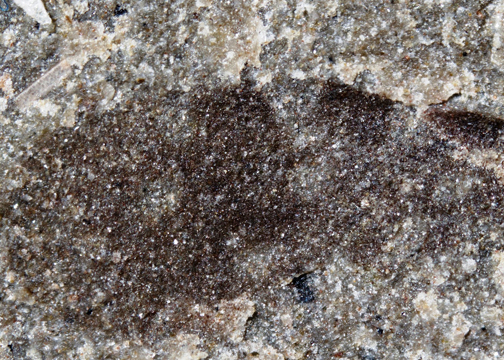Abstract
True bugs (Heteroptera) are uncommon in the Lower Cretaceous Wealden Group of southern England, being represented by occasional terrestrial and aquatic forms (Jarzembowski, 2011). None have been formally described, but a giant water bug (belostomatid) and a saucer bug (naucorid) have been figured from the Weald Clay Formation (Jarzembowski & Coram, 1997: fig. 10; Austen et al., 2011: fig. 5, respectively). The former was considered closely allied to a stygeonepine from the Las Hoyas Konservat-Lagerstätte in eastern Spain and was subsequently reconstructed as Iberonepa sp. (Jarzembowski & Jarzembowski, 2019: fig. 3). Here we report two new nepomorphs, a patterned creeping water bug (naucorid) from the lower Weald Clay and the first Wealden toad bug, adding an ochteroid to the palaeoentomofauna—the largest and oldest gelastocorid known to date.
References
- Austen, P.A., Jarzembowski, E.A., Toye, G. & Keenan, T.J. (2011) Field trip to the Weald Clay of Warnham—Saturday 23 July 2011. Magazine of the Geologists’ Association, 10 (4), 12.
- Carpenter, F.M. (1992) Superclass Hexapoda. Treatise on Invertebrate Paleontology. Part R Arthropoda 4 Volume 3. Geological Society of America and University of Kansas, Boulder, p. 265. [xxi + 277]
- Carver, M., Gross, G.F. & Woodward, T.E. (1991) Hemiptera. In: Commonwealth Scientific & Industrial Research Organization. The insects of Australia. Second edition. Volume 1. Melbourne University Press, Carlton, pp. 429–509.
- Coram, R.A. & Jarzembowski, E.A. (2021) Immature insect assemblages from the Early Cretaceous (Purbeck/Wealden) of southern England. Insects, 12 (10), 942. [1–23] https://doi.org/10.3390/insects12100942
- Forey, P. & Sweetman, S.C. (2011) Bony fishes. In: Batten, D.J. (Ed.), English Wealden fossils. Palaeontological Association Field Guide to Fossils, 14, 225–235.
- Gallois, R.W., Thurrell, R.G., Worssam, B.C. & Bristow, C.R. (1972) Horsham. Sheet 302 (1: 63360). British Geological Survey, London.
- Glime, J.M. (2017) Aquatic insects: Holometabola—Coleoptera, Suborder Adephaga. In: Glime, J. M., Bryophyte ecology. Volume 2. Bryological interaction. Michigan Technological University and the International Association of Bryologists, Michigan, p. 11-9-5 [1-14].
- Ijaz, D. (2013) Animal Diversity Web [cream-spot ladybird]. Available at:https://animaldiversity.org/accounts/Calvia_quatuordecimguttata (Accessed 03/11/24)
- Jarzembowski, B. & Jarzembowski, E.A. (2019) Wealden insects: an artist’s update (Part IV). Deposits, 57, 24–27.
- Jarzembowski, E.A. (1995) Early Cretaceous insect faunas and palaeoenvironment. Cretaceous Research, 16 (6), 681–693. https://doi.org/10.1006/cres.1995.1042
- Jarzembowski, E.A. (2011) Insects excluding cockroaches. In: Batten, D.J. (Ed.), English Wealden fossils. Palaeontological Association Field Guide to Fossils, 14, 138–173.
- Jarzembowski, E.A. & Coram, R.A. (1997) New fossil insect records from the Purbeck of Dorset and the Wealden of the Weald. Proceedings of the Dorset Natural History & Archaeological Society, 118, 119–124.
- Kemp, S.J., Wagner, D. & Ingham, M.N. (2012) The mineralogy, surface area and geochemistry of samples from the Wealden Group of southern England. British Geological Survey Internal Report, IR/10/079, [4] + iv + 26 pp.
- Latreille, P.A. (1810) Ordre III: Hemiptera, Section Heteroptera. In: Considérations générales sur l'ordre naturel des animaux composant les classes des crustacés, des arachnides et des insects; avec un tableau méthodique de leurs genres disposés en familles. F. Schoell, Paris, pp. 250–251, 254–261, 421, 433–434. https://doi.org/10.5962/bhl.title.34917
- Leach, W.E. (1815) Entomology. In: Brewster’s Edinburgh Encyclopaedia. Volume 9. William Blackwood, Edinburgh, pp. 57–172. [i + 764]
- Linnaeus, C. (1758) II. Hemiptera. In: Systema naturae per regna tria naturae, secundum classes, ordines, genera, species, cum characteribus, differentiis, synonymis, locis. Tomus I. Editio decima, reformata. Laurentius Salvius, Holmiae, pp. 434–439. [iv + 823] https://doi.org/10.5962/bhl.title.542
- Popov, Y.A. (1971) Historical development of Hemiptera Infraorder Nepomorpha (Heteroptera). Transactions of the Paleontological Institute of the Academy of Sciences, USSR, 129, 1–144. [In Russian]
- Popov, Y.A., Coram, R. & Jarzembowski, E.A. (1999 for 1998) Fossil heteropteran bugs from the Purbeck Limestone Group of Dorset. Proceedings of the Dorset Natural History and Archaeological Society, 120, 73–76.
- Radley, J.D. & Allen, P. (2012) The Wealden (non-marine Lower Cretaceous) of the Weald Sub-basin, southern England. Proceedings of the Geologists’ Association, 123, 245–318. https://doi.org/10.1016/j.pgeola.2012.01.002
- Say, T. (1832) Descriptions of new species of heteropterous Hemiptera of North America. New Harmony, Indiana, p. 37.
- Sweetman, S.C. & Evans, S.E. (2011) Lissamphibians. In: Batten, D.J. (Ed.), English Wealden fossils. Palaeontological Association Field Guide to Fossils, 14, 240–263.


